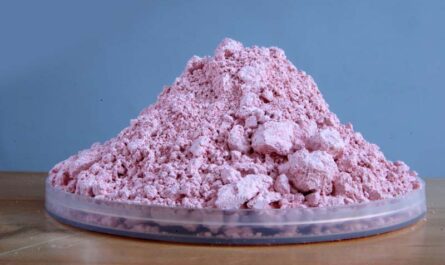Introduction
As oil and gas reservoirs around the world continue to age and decline in productivity, operators turn to stimulation methods to boost recovery rates from these assets. Oilfield stimulation involves injecting specially formulated chemicals into wells to improve production by enhancing fluid flow into the wellbore. These stimulation chemicals play a vital role in maximizing resource recovery from both conventional and unconventional reservoirs.
Hydraulic Fracturing Chemicals
One of the most common stimulation techniques used worldwide is hydraulic fracturing, also known as fracking. Hydraulic fracturing involves pumping fluids and proppants deep underground at high pressures to fracture the reservoir rock and form conductive channels. The fluid used in hydraulic fracturing is typically water-based and contains several additives. Some key hydraulic fracturing chemicals include:
– Friction Reducers: These polymers are added to hydraulic fracturing fluids to reduce friction as the fluid flows through pipes and fractures. Friction reducers improve pumping efficiency.
– Crosslinkers: Crosslinkers help form gels from guar gums or cellulose polymers added as viscosifiers. The crosslinked gels suspend proppants in fractures without excessive fluid loss.
– Breakers: As the name suggests, breakers are chemicals that degrade crosslinked gels after the fracturing process to reduce viscosity and allow flowback. Common breakers are oxidative and enzyme breakers.
– Surfactants: Surfactants or surfactant blends are added as emulsion stabilizers in oil-based fracturing fluids. They also improve fluid recovery by preventing fluid adhesion to the formation.
– Biocides: Biocides such as glutaraldehydes are used to prevent bacterial degradation of fracturing fluids which could compromise fluid properties and result in health issues.
With advances in horizontal drilling technologies, hydraulic fracturing has enabled economical development of extensive shale plays all over the world. Careful selection and proper application of these additives is vital for high stimulation effectiveness from hydraulic fracturing treatments.
Acidizing and Matrix Stimulation
Besides fracturing, acidizing and matrix stimulation methods are also widely used to boost well productivity from conventional and tight reservoirs with low permeability. These techniques involve injecting acids into the reservoir to dissolve minerals and etching microfractures to access more pore space. Commonly used acidizing chemicals include:
– Hydrochloric Acid (HCl): HCl is a very effective mineral acid used for matrix stimulation of carbonate reservoirs. It dissolves minerals like calcite and dolomite.
– Hydrofluoric Acid (HF): HF acid and acid blends containing HF are suitable for dissolving silica, alumina, and silicates in sandstone reservoirs. HF must be handled very carefully due to its toxicity.
– Chelants: Chelants like EDTA are added to acid mixtures to control reaction rates by chelating metal ions released during the acidizing process. This prevents premature acid spent.
– Corrosion Inhibitors: Corrosion inhibitors such as tallow amine or quaternary ammonium salts protect production equipment from damage by acids during injection and placement.
Precise placement of acid stimulations in the target zones and prudent acid stage and rate design are essential to maximize the productivity uplift from acidizing treatments. The careful selection and use of acidizing chemicals contributes significantly to procedure effectiveness.
Corrosion and Scale Inhibitors
Besides stimulations, various production and injection chemicals are regularly used in oilfield operations. Corrosion of production equipment by water and scales depositing in pipes are major production impairment issues. Multiple chemical classes are employed to tackle these problems, including:
– Imidazoline-based corrosion inhibitors: Popular choices for protection of carbon steel from corrosion in production pipelines.
– Phosphonate scale inhibitors: Effective for preventing calcium scales like calcite and dolomite from precipitating out of produced waters.
– Quaternary ammonium scale inhibitors: Common scale treatments for sulfate and silica scales typically associated with high-TDS injection waters.
– Customized inhibitor packages: Blends of different inhibitor chemicals tailored for specific field conditions to achieve multi-metal corrosion protection and scale inhibition.
Proper chemical program design incorporating corrosion and scale monitoring ensures long-term well, facility and pipeline integrity for sustained production output over the producing life of oil and gas assets.
Chemical Conformance Control
As oilfields mature, conformance issues arising from heterogeneous reservoir permeability and fluid channeling become major productivity-limiters. A class of specially formulated polymers called conformance polymers are injected to improve volumetric sweep efficiency. Key conformance chemicals include:
– Crosslinked polymer gels: Used for deep gel placement processes to permanently block high permeability zones causing channeling.
– Degradable particles: These particles degrade over time after sealing off thief zones, allowing subsequent fluid injection.
– Reversible polymer gels: Provide temporary plugging which can be broken when required to restore injectivity.
– Swellable polymers: Swell upon contact with injection fluids to reduce permeability in unwanted zones.
Successful application of conformance control chemicals recovers significant bypassed hydrocarbons by diverting subsequent injections into unswept reservoir intervals, improving asset recovery factors markedly.
Conclusion
Oilfield stimulation chemicals play an indispensable role in optimizing recovery from maturing reservoirs. Whether it be hydraulic fracturing fluids, acidizing mixtures, corrosion/scale inhibitors or conformance polymers, their formulation and application directly impacts the effectiveness of stimulation operations. Continued research and development enhances the abilities of these chemicals to further increase production and recovery of hydrocarbon resources globally. Proper handling and environmental regulations also ensure safe operations.




